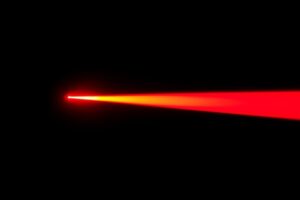Photoelectric Sensors
Photoelectric sensors, also known as photoeyes, emit a light beam that can be used to detect items, equipment or surface changes. The receiver measures the light patterns when the light emitted is interrupted by an object or reflected by it. This allows the object or surface to be identified. Photoelectric sensors can be found in many industrial fields such as packaging and food, medical equipment, material handling and more.

Photoelectric Sensors
A photoelectric detector consists of a light emitter and a receiver. The amount of light arriving at the receiver changes when the emitted light has been interrupted. This change is detected by the Receiver and converted into an electrical output. Infrared and visible light is used as the light source in most photoelectric sensors (usually red or green/blue to identify colors).
Depending on the installation or environment, there are different types of photoelectric sensor. The most common are:
The beam that is reflected (or redirected):
On thru-beam sensor, the emitter and receiver are aligned in opposite directions. This has the advantage that light can reach the receiver directly, allowing for long detection ranges with high excess gain. These sensors can reliably detect almost any object. Angle of incidence, surface properties, color, etc. are all irrelevant to the functionality of the sensor.
Retroreflective:
Retroreflective sensors can be easily installed because the emitter and receiver of the housing are positioned in such a way that they are easy to align. Align the sensor by placing a reflector to the opposite side. Standard version with polarization filters combines installation advantages of the retroreflective systems and reliable detection even for reflective objects at long detection distances. Retroreflective sensors are perfect for reliably detecting clear objects.
Diffuse (proximity Sensing)
The installation of diffuse mode sensors is particularly simple, as only one sensor device needs to be installed and there is no need for a reflector. These sensors are designed to detect small objects reliably, even at close distances. They feature high switching accuracy and operate mostly in close proximity. Sensors with background suppression only sense a certain area directly in front of them. Sensors ignore objects outside this zone. Sensors that suppress background interference are equally insensitive to background objects and still very precise. Sensors that evaluate the background are used for applications where the background is fixed and the sensor can be aligned.
Photoelectric sensors achieve an incredibly high level of resolution thanks to advanced design techniques that resulted in a small, focused beam and a unique system for receiving the light. They can detect small objects and also determine their exact location.
Due to the “working conditions”, it is essential that every part be manufactured according to the strictest specifications. We at SUPERIOR® Optics take pride in ensuring that the precision optic lens we manufacture and design fits the parameters of the model you have.
We design and manufacture optical lenses for security, high-tech, and electronic applications. We have 1000’s standard lens assemblies in stock and can design a custom solution for scanners and CCTV, CCD/CMOS and medical imaging.




